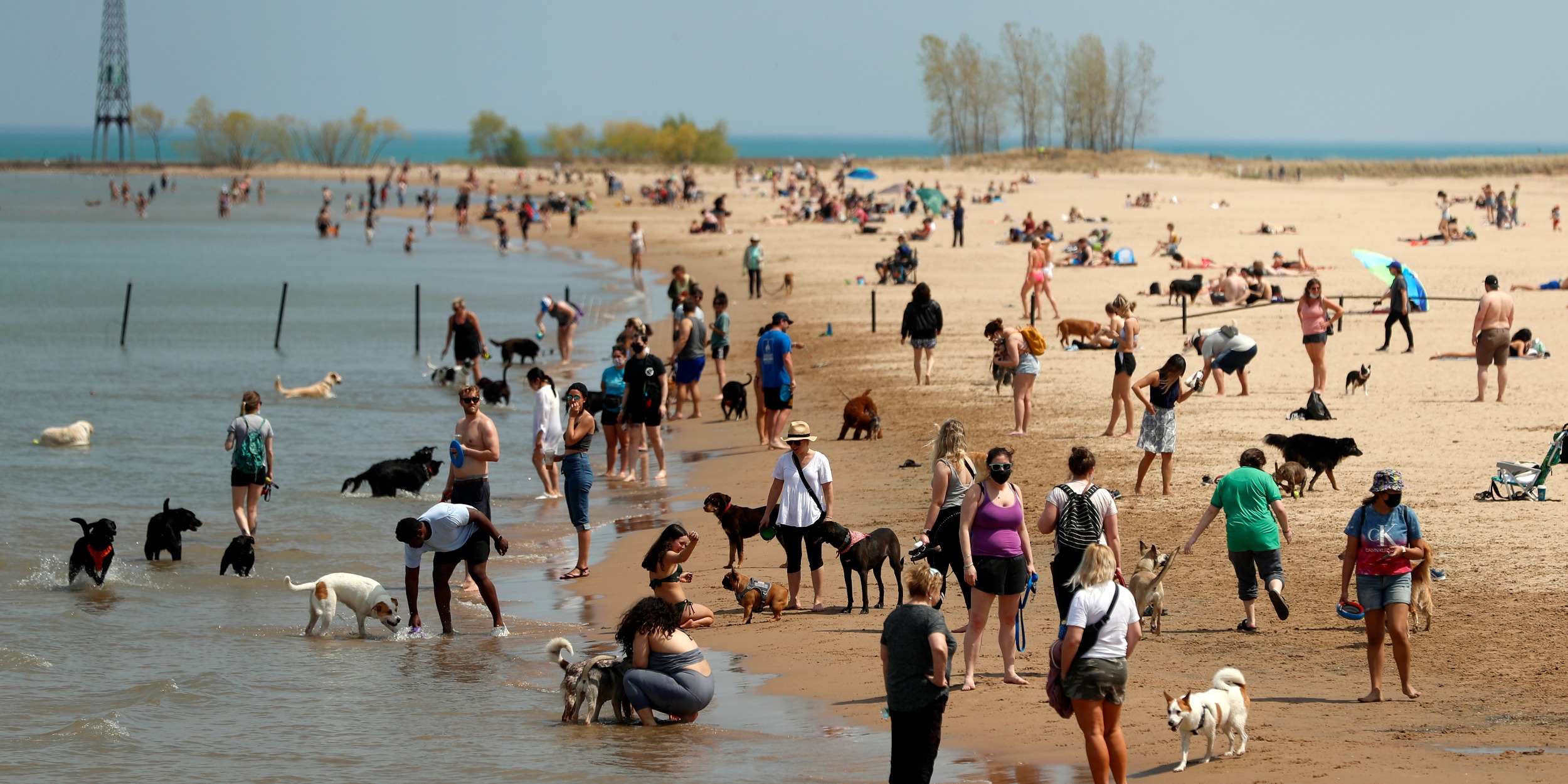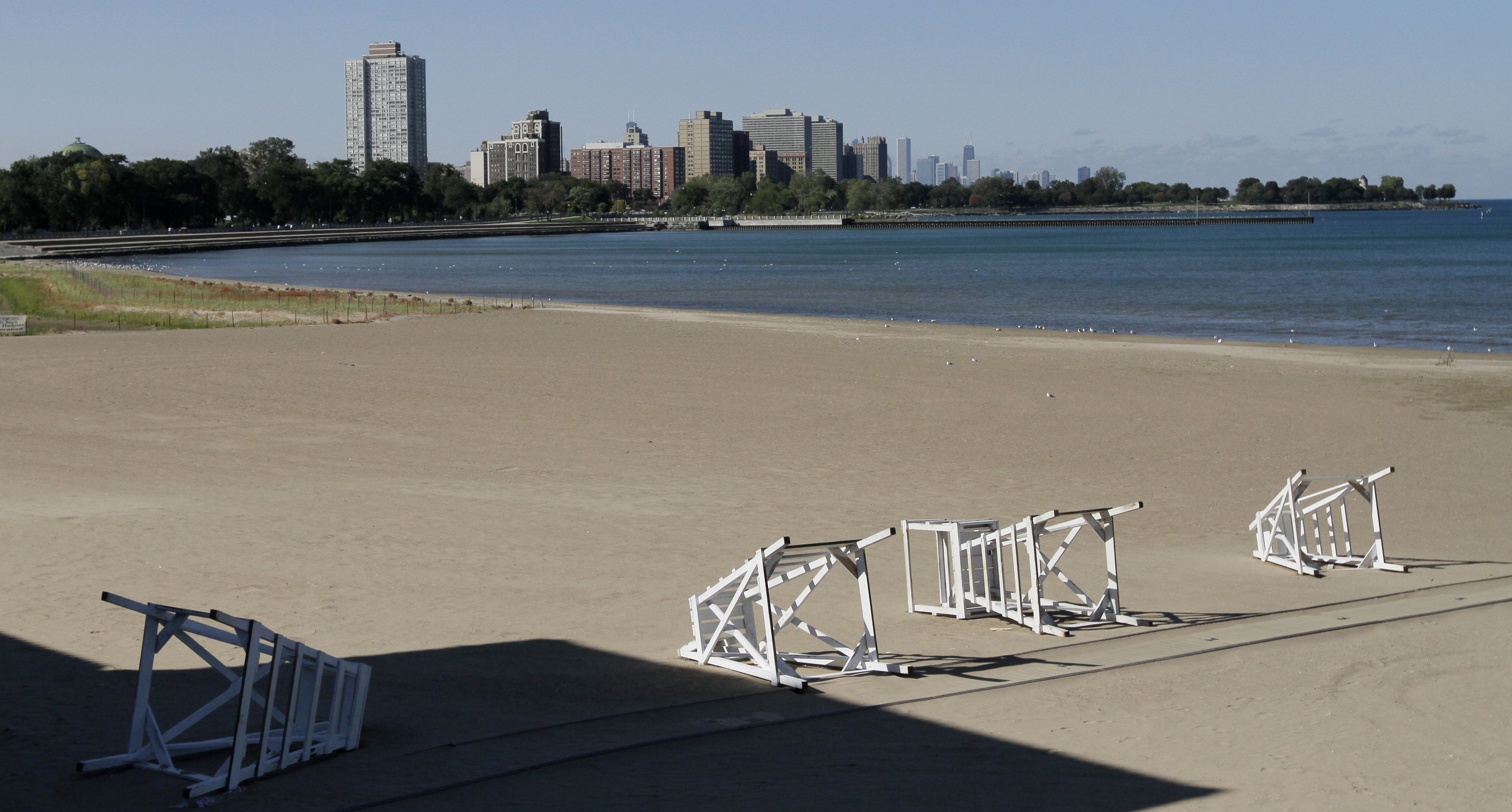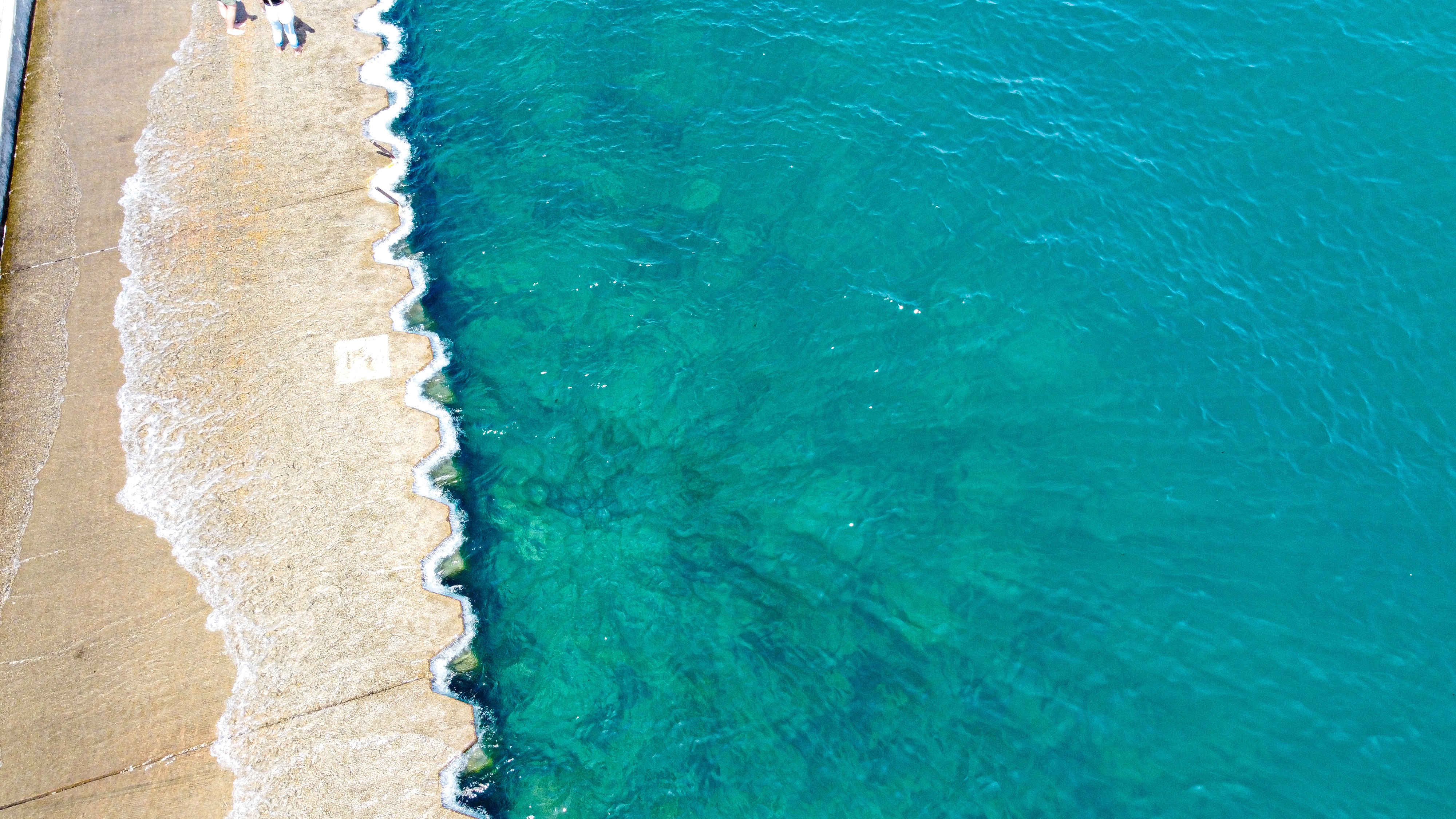For just a few months out of the year, Chicagoans flock to the city’s beaches, lather on sunscreen and wade into Lake Michigan’s chilly waters. It’s our reward for trudging through grey slush on overcast days all winter long and is just one of the things that makes summer in Chicago so great. But the next time you slide into flip-flops and roll up a beach towel to head to one of the city’s many beaches, you might find yourself wondering how clean that water you’re swimming in really is, where all the sand comes from or what Chicago beach you should visit next. Curious City has you covered with answers to those questions and more. So charge up that portable speaker and dig those sunglasses out of a drawer, because we’re hitting the beach!
How many different beaches does the public have access to?
Chicago has 26 public beaches, and all of them are free. (This isn’t the case in some of the nearby suburbs, such as Evanston). But three beaches are currently closed to the public: Fargo Beach, Howard Beach and Juneway Beach. Rocks were placed at Fargo and Howard beaches in 2019, following a storm, but it’s unclear if or when these neighborhood beaches might reopen. The Park District says on its website these beaches are currently closed because of erosion, an ongoing issue facing the lakefront.

What makes different Chicago beaches unique?
Beaches in Chicago range from the city’s only inland beach (Humboldt Park Beach) to the largest dog-friendly beach (Montrose Dog Beach) to quiet, tucked-away beaches (South Shore Beach, behind the South Shore Cultural Center). But even some of the city’s more well-known beaches have unique things that make them worth a visit.
For instance, Rainbow Beach in South Chicago is a popular spot for barbecues with grills available and free WiFi so you can keep the music streaming. Then there’s Promontory Point in Hyde Park, accessed via the 55th Street underpass. It’s not exactly a beach, but this popular swimming spot has limestone rocks that lead down to the water as well as shady grassy spots that provide relief from the sun. It’s also the only place with city-sanctioned fire pits in Chicago. 31st Street Beach (also known as Margaret T. Burroughs Beach) in Bronzeville boasts a range of water sport rentals like paddleboarding and has great views of the Chicago skyline. Besides its famous dog beach, Montrose Beach near Uptown is a popular bird-watching spot, with the nearby Montrose Point Bird Sanctuary attracting a range of migratory and native bird species. Just north of Montrose Beach, in Edgewater, there’s Hollywood Beach (also known as Kathy Osterman Beach), a queer-friendly spot where well-oiled sunbathers and their pals enjoy the sunshine.

Is the sand at Chicago and North Shore beaches native to the area or is it imported?
Chicago’s got some great sand on its numerous beaches — perfect for sandcastles or beach volleyball. And it turns out that lovely sand isn’t trucked in or shipped in from Florida or California. It’s native, native to Illinois at least, and some of it comes directly from Lake Michigan. But just because there’s sand available that doesn’t mean the beaches are all natural.
“Actually the entire Chicago lake shore is all engineered in some way or another,” according to Dr. Charles Shabica, a coastal geologist and president of Shabica & Associates, a coastal consulting firm. See the sand moves around. So even though Illinois has plenty of sand, it takes a lot of work to keep and maintain those wide beaches from disappearing due to things like erosion.
What’s up with the sandbags along Chicago’s beaches?
Those big, black, square sandbags are actually called “trapbags” and they are filled with pebbles and rocks.
“The idea is that it breaks up the wave action and it is intended to be temporary,” Heather Gleason, director of planning and development at the Chicago Park District, told ABC-TV news. "So we don't think the lakefront will always look this way but while the water levels are high it is a way for us to do repairs and still allow people to use [the area around it].”
Park District spokesperson Michele Lemons wrote in an email that the bags are part of “emergency shoreline work” where “high lake levels continue to cause significant erosion issues.” She calls them an “intermediate measure until more long term solutions become feasible.”
And when might those longer term solutions become feasible?
“The District can’t provide a timeline for when more long term solutions will be implemented,” Lemons wrote.

Are Chicago’s beaches more polluted than ocean beaches?
While there are no studies looking specifically at Chicago beaches vs coastal beaches, the Natural Resources Defense Council did track pollution rates (these are based on bacteria level limits set by the US Environmental Protection Agency) on Great Lakes beaches and coastal areas for several years, and compiled data in this 2014 report.
And it turns out the Great Lakes’ beaches do exceed these EPA pollution limits (when swimmers might start getting sick) more often than coastal ones. Why is that?
NRDC spokesman Josh Mogerman says it comes from a few factors — including that the Great Lakes are a smaller closed system with fresh water, while the oceans have salt water, more wave action and more water, all of which allows for easier dilution of pollution.
“But, there is a lot of industrial pollution in the [Great Lakes] region that contributes to the high rates,” he wrote in an email, adding that intense storms in cities like Chicago can also add to the problem. “Lots of nasty stuff gets washed into the lakes from our cities and stormwater systems.”
The nastiest stuff gets pushed into the lake when Chicago area stormwater systems get so full that the city releases raw sewage directly into local waterways. This is the only pollution event that Chicago officials still close the beaches for these days.
How much poop is in the water at Chicago’s beaches?
When we last answered a question about this from Curious Citizen Regan Burke in 2019 we learned that the city used to close beaches when E. coli readings got too high but stopped those closures several years ago.
These days Chicago health authorities test for a different fecal indicator called enterococci but they keep the beaches open even when those bacteria levels skyrocket. When enterococci readings hit 1,000 CCE, federal authorities say you must warn beachgoers about the dangers, since about 4 percent of swimmers are likely to get sick at those levels. To comply with this rule, when levels hit 1,000 CCE, the Chicago Park District does post a yellow flag and lists the bacteria readings (updated by noon each day) on its website. But it’s unclear if beachgoers understand what the flag means or visit the website to check the bacteria readings.
This concerns some local beach safety scientists because this summer, for example, enterococci levels at Chicago beaches have regularly soared past 1,000 CCE--even hitting 40,000 CCE last month.
University of Illinois at Chicago environmental epidemiologist Sam Dorevitch says the city should consider better public notification when levels get so high.
“Whether that should be accompanied by closing the beach or just firmer language about [staying out of the water] if you have underlying health problems, I think that would be important,” he said.


